A Hair follicle inflammation usually runs positively and heals on its own. Preventive measures can reduce the risk of hair follicle inflammation.
What is hair follicle inflammation?

The inflammation of the hair follicles is also known as folliculitis in medicine. Characteristically, inflammation of the hair follicle manifests itself in a reddened nodule that is located around a hair.
This nodule usually encloses a pustule that appears yellowish-green. In many cases, inflammation of the hair follicle is associated with mild pain or itching. Hair follicle inflammation can occur on all parts of the body that are covered by hair.
However, the face, neck, buttocks and / or legs and arms are often affected by the inflammation. Depending on the part of the body where the hair follicle inflammation forms, this can also be a cosmetic nuisance for the person concerned.
causes
Most often, inflammation of the hair follicle is caused by a bacterial infection. In rare cases, however, various fungi or viruses (such as the herpes virus) can lead to inflammation of the hair follicle. Medicine suggests that some people are very susceptible to developing follicle inflammation, while other people rarely or never experience the inflammation.
Hair follicle inflammation can be promoted, for example, by various hair removal methods; In particular, this includes the methods in which the hair and its roots are removed. Small, superficial wounds can form at the location of a removed hair, through which germs can enter the body more easily and thus cause inflammation of the hair follicles. It is also possible that hair that grows back does not penetrate the skin and / or continues to grow laterally below the skin. One possible consequence of this is inflammation of the hair follicles.
Factors that can increase the risk of inflammation of the hair follicles include diseases such as diabetes and acne. In addition to various drugs such as cortisone, a tropical, warm, humid climate can also promote inflammation of the hair follicles.
Symptoms, ailments & signs
A hair follicle inflammation is usually noticed by those affected by the noticeable reddening. Typically, a boil forms, which fills with pus as the disease progresses. The inflammation itself causes increasing pain and an uncomfortable feeling of pressure. If the boil breaks inwards, an effusion can form.
If the course is severe, blood poisoning occurs, which manifests itself as an acute feeling of illness, fever and a number of other symptoms and must be treated immediately. In the further course of an inflammation of the hair follicles, beard lichen can develop. In addition, other skin changes sometimes occur that significantly impair the patient's well-being.
Some people feel sick or have severe itching, which increases in intensity as the disease progresses. This can cause the patient to scratch the boil, which in turn can lead to infection. The external blemish can cause social anxiety or resentment in those affected. Chronic illnesses can lead to depression. In most cases, hair follicle inflammation is harmless. It resolves itself after a few days and does not cause any further symptoms.
Diagnosis & course
The dermatologist usually diagnoses an inflammation of the hair follicles based on the visible symptoms.
If it is to be investigated which germs have led to a corresponding inflammation, this is possible with the help of various laboratory procedures: For example, so-called cultures can be created from smears on the inflammation of the hair follicle; the corresponding culture then reveals the pathogen present.
In most cases, inflammation of the hair follicles can be treated successfully without leaving any visible scars. In people with darker skin types, pigmentation disorders can show up in the corresponding area after an inflammation of the hair follicles.
In the case of mild courses and missing underlying diseases, an inflammation of the hair follicles often heals by itself. In the more severe course, an inflammation of the hair follicles can spread to surrounding tissue, for example, so that a boil develops.
Complications
In most cases, the hair follicle inflammation does not cause any particular complications or discomfort. This inflammation usually subsides on its own, so that no further treatment is necessary for the patient. Only in rare cases do severe symptoms arise that require medical treatment. As a rule, the patient suffers from pustules that appear directly on the hair follicle.
However, there is no pain or other discomfort. In some cases, the inflammation of the hair follicles can also lead to beard lichen, which, however, must be treated medically. Furthermore, the patient can also suffer from a pigment disorder. This is not dangerous and does not represent a particular complication for the patient. In the case of a treatment of the inflammation of the hair follicles, drugs are used.
These lead relatively quickly to a positive course of the disease, with no particular complications occurring. The symptoms disappear relatively quickly and there are no consequential damages. Life expectancy is also not reduced or influenced by inflammation of the hair follicles. However, the treatment does not guarantee that the hair follicle inflammation will not recur in the patient later in life.
When should you go to the doctor?
Since the inflammation of the hair follicles can also spread to other regions of the body and there is usually no self-healing, the disease should always be examined by a doctor. This can lead to hair loss without treatment. A doctor should be consulted in the case of inflammation of the hair follicle if pustules develop on the hair.
Boils can also appear and be associated with pain. In many cases, itching of the scalp also indicates inflammation of the hair follicle. This inflammation can also spread to the beard without treatment. If the symptoms also occur in the beard area, a visit to a doctor is also necessary. Usually, the disease can be treated by a dermatologist or a general practitioner. Since the symptoms can in some cases also lead to psychological upset or depression, psychological treatment is advisable in this case.
Doctors & therapists in your area
Treatment & Therapy
As a rule, inflammation of the hair follicle can be adequately treated by applying certain active ingredients locally. Which active ingredient is used in each individual case depends primarily on the type of germ that caused the hair follicle inflammation; While bacterial inflammation can be countered with creams / ointments containing antibiotics, fungicidal (antifungal) substances are useful if the inflammation was caused by a fungus.
In severe cases it can make sense to treat follicle inflammation not only locally, but systemically (affecting the whole body); In the case of bacterial inflammation of the hair follicles, this is possible, for example, by administering antibiotics in tablet form.
So-called phototherapy can also be successful in treating hair follicle inflammation; Here, the part of the body affected by the inflammation is irradiated with infrared or UV light for approx. 10 to 15 minutes. Irradiation with UV light has a germicidal effect, among other things.
Alternative medical specialties such as herbal medicine offer further treatment options for inflammation of the hair follicles: For example, ointments containing essential oils from myrrh and / or rosemary are considered effective in combating inflammation.
Outlook & forecast
The chances of success in coping with the inflammation of the hair follicles can be classified as good. Local treatment is usually sufficient. If a persistent form exists, antibiotics should be given.This affects the entire body. To a limited extent, people can help prevent inflammation of the hair follicles.
In most cases, inflammation of the hair follicle will heal on its own. A doctor does not have to be called in. The focus of inflammation bursts after a while and heals. A small scar remains. Ointments with antiseptic and antibiotic additives can aid recovery. They prevent germs from spreading.
At risk patients are usually people with a reduced immune system. Statistically speaking, smokers and people with an unhealthy lifestyle are also significantly more likely to be affected. Irrespective of age, they can develop chronic hair follicle inflammation. Cases in which bacteria enter the bloodstream through a wound are unfavorable. However, the resulting blood poisoning is very rare.
Those affected can help prevent the infection from spreading. This improves the outlook. General hygiene standards must be observed for this purpose. Using fresh laundry and washing your hands several times a day is important.
prevention
In direct form, inflammation of the hair follicles can only be prevented to a limited extent. However, the risk of inflammation can be reduced by removing hair using methods such as wet shaving; here the risk is comparatively low that the skin will be injured and germs penetrate the wound.
Aftercare
An inflammation of the hair follicles usually does not require extensive aftercare. After the doctor has opened the pustule or boil and disinfected the skin, the inflammation should heal quickly on its own. The patient should make another visit to the doctor so that complications can be ruled out. In addition, it is sufficient to clean the affected area regularly and, depending on the severity of the inflammation, treat it with an ointment or another preparation.
If the inflammation does not subside, the doctor should be consulted. If the boils recur, it may be necessary to take an antibiotic. The patient should also contact a dermatologist. The specialist can carry out an examination of the skin and thereby determine the cause of the recurring inflammation of the hair follicles.
Typically, however, boils or pustules can be treated well and do not require any aftercare. People who have the hemophilia need to make sure that no more inflammation occurs to reduce the risk of a complication. The same applies to people with an immune deficiency. If the inflammation spreads, careful body observation is necessary after medical treatment. Fever and other warning signs indicate blood poisoning and need to be investigated.
You can do that yourself
Inflammation of the hair follicles does not always have to be treated by a doctor. With a fresh boil, the discharge of the purulent contents can be promoted with the help of moist compresses and pulling ointment. Warm milk, cabbage, figs and linseed also help against a boil. Natural home remedies are, for example, black tea bags or compresses with chamomile and lemon balm, which are simply placed on the affected skin area. A visit to the sauna opens the pores and allows the contents to drain away painlessly.
The inflammation usually subsides quickly with regular use of these agents - however, there is a risk that the bacteria will spread and lead to the formation of further boils. For this reason, the surrounding skin should be carefully disinfected after contact and clothing, bedding and towels should be washed with hot water. If a point of pus has already formed, the inflammation can be opened with the help of a needle.
This should also be disinfected beforehand - preferably by holding it over a flame or by rubbing it with disinfectant from the pharmacy. An effective remedy from homeopathy is St. John's wort tincture, which is best applied to the boil in the form of a gauze bandage. In the case of severe inflammation of the hair follicles, a visit to the doctor is recommended.

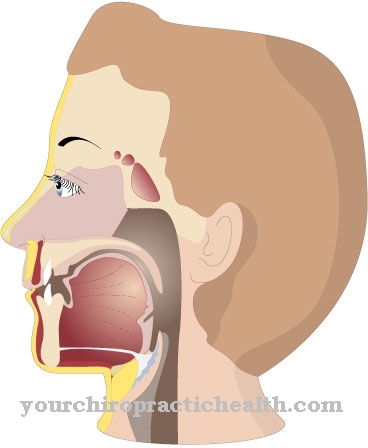
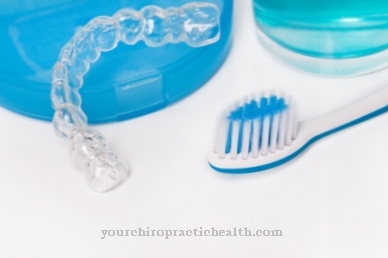
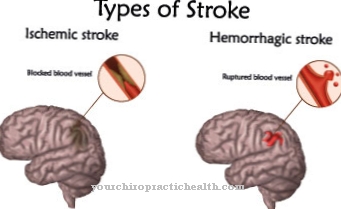
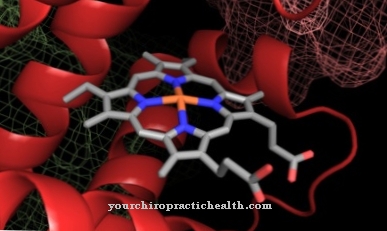
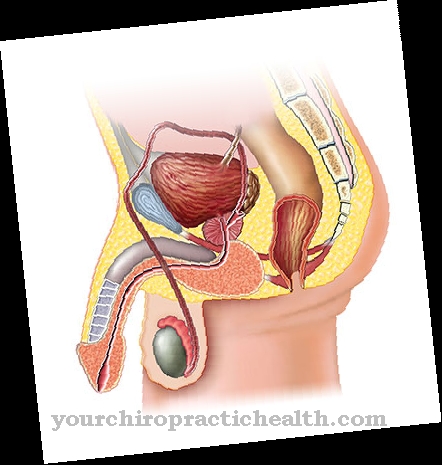
.jpg)

.jpg)



















